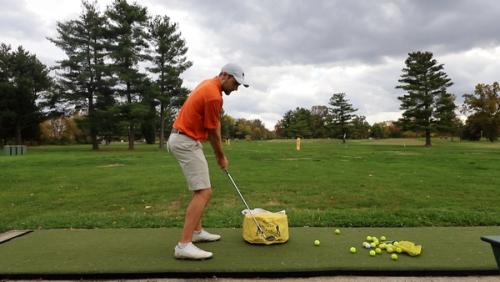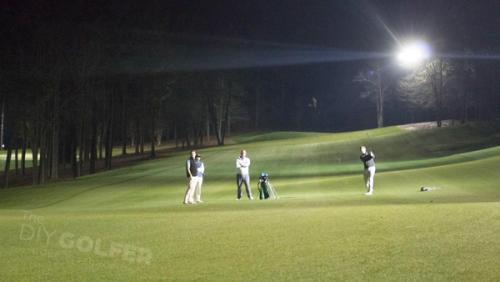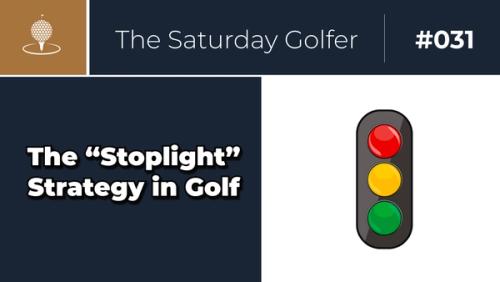There is a bonus lesson coming to your inbox tomorrow, so be sure to keep an eye out!
Here are the prior lessons of this series for reference:
- Part 1: How to strike the ball more consistently and break 90 every time
- Part 2: Keep your head steady, not down
In today's lesson...
- You will learn the MOST IMPORTANT element to improving your golf game
- You will learn the correct approach to addressing common swing issues like a slice or a hook
- You will learn what it takes and furthermore, how long it takes to break 90 on a consistent basis
Welcome to part 3 of this lesson series on how to gain more consistency in your golf swing. In parts 1 and 2, we talked about how breaking 90 on a consistent basis is not something that requires hours and hours of practice, but instead, a better framework to understand the golf swing. If you can understand the first principles and cause and effect relationships in the golf swing, you will easily break 90 every time you set foot on the course in just a few, effective hours of practice a week.
We also covered the topic of the steady head, how this is different from keeping your head down, and how doing it correctly is one of the critical skills to master in the golf swing.
Not only have I successfully implemented this steady head concept at the highest level of collegiate golf, but many of the greatest players to ever live find this concept integral to their ballstriking. If Jack Nicklaus claims it to be the most important part of his game, I'm pretty comfortable saying it should be a top priority in yours.
In the last two parts to this lesson, I've done a lot of talking and a lot of teaching. Hopefully you have found everything refreshing and informative, but oftentimes, the most helpful portion of this 3 part lesson is me answering your questions! So let's take a few minutes to walk through the most common questions that I get from students regarding specific topics like keeping the head steady and broader topics like strategies for breaking 90 more consistently.
Question 1: What is the one thing that I need to focus on in my swing?
I've said it several times in this 3-part lesson, but I'll say it again. There is no SECRET to the golf swing. If anything, the secret is that there is no secret! The golf swing is an interconnected motion where everything has a cause and effect. Yes, there are certain things that are more important than others. I'd much rather you work on keeping your head steady in the backswing than getting your backswing perfectly on-plane. But your end goal is not to master a single movement! Your goal is to understand the relationships (i.e. cause and effect) within the golf swing so you can quickly diagnose your swing faults and fix them before they become too detrimental.
Question 2: How can I become more consistent in golf?
Consistency in golf is not about perfecting your golf swing. It's not about becoming super confident all of a sudden. And it's not about learning how to hit specialty short game shots.
Consistency in golf comes from frameworks.
You not only need a framework for understanding the cause/effect relationships in the golf swing, but you need a framework for making decisions on the course and a framework for practicing golf.
Why?
Because frameworks prevent you from becoming like 99% of golfers. Most golfers go to the range or course focused on fixing what is broken. Golfers with frameworks go to the range or course focused on improving the core elements of a good golf game and trust that by doing this, their current problems will be resolved.
Question 3: How do I fix my slice/hook?
This is probably my favorite category of question.
"How do I fix XYZ problem?"
Yes, there are drills you can do to fix slices, hooks, chunked shots, shanks, and skyballs, but without understand what it is the drill you are working on aims to accomplish, you are at risk of breaking an entirely separate part of your game!
For example, generally, golfers who slice the golf ball do not perform their transition effectively. Most golfers can learn this through a quick Google or YouTube search.
Where a golfer goes wrong is when he tries to fix his transition without realizing that the transition is influenced heavily by where your club is at the top of the golf swing and even more by how your lower body moves during this short interval of time.
Without knowing these cause/effect relationships, the golfer might attempt to "fix" their transition by moving their upper body differently while the true cause of this fault exists in the lower body.
To fix something like a slice for good, you must understand that a slice is caused by a clubface that is open relative to your club path, which is influenced by various things like your takeaway plane, transition sequence, grip, and alignment. Fixing one of these things might alleviate the pain, but to find the cure, you need to know how all of these factors are interacting and adjust your practice schedule accordingly.
Question 4: How long does it take to Break 90 consistently?
And maybe one of the most common questions I'll get is how long will it take to shoot a certain score?
We all ask this question knowing in the back of our heads that it depends on the amount of time you practice, and what skill level you start at.
I'll assume that most golfers have a full time job, maybe a family, and other obligations that prevent them from practicing golf as much as they'd like. Under this assumption, the question really becomes, "How long will it take me to break 90 when I only have a few hours a week to practice?".
To answer this question, we need to zoom out a little bit. The truth is, whether you are trying to break 70, 80, or 90, the process is the same. The material actions you take might be slightly different, but the overarching process should not be any different.
Any amount of game improvement, whether you are trying to break 70, 80, 90, or 100 requires a sustained effort to improve each of the following areas:
- Your fundamentals
- Your golf swing
- Your pitching and chipping
- Your putting
- Your course management (kind of boring to talk about, but important)
- Your mental game (also kind of boring to talk about, but also super important!)
Focusing too much on one area will slow your progress just like practicing the wrong things will slow your progress.
Like I said, breaking 90 doesn't require a huge time commitment, but it does require a commitment to all areas of your game and a commitment to learning the most effective things to practice in each area.
I've personally been through each stage of game improvement, and I know what it takes to break 100, 90, 80, and 70. I know that each stage of improvement is difficult for different reasons, which is why I created this three part lesson dedicated solely to those trying to break 90 and become more consistent in their ballstriking (but even a 70s shooter could benefit from this lesson series--heck, my game benefited from making it!)
If I'm being honest, this three part lesson alone has all the information you need to break 90 in a short period of time. No, it doesn't cover every part of the golf swing, but it does present you with a highly effective way to think about golf improvement. If I had to leave you with a single framework for understanding golf improvement, it would be summed up in 3 letters.
PAR - Prepare, Apply, Review
Most golfers skip the "R", and take shortcuts on the "P". Most golfers will watch a YouTube video (P), try what is said in the video (A), and then do it all over again.
Going back to what I talked about in part 1, I like to think of this type of golf just like the game of "whack-a-mole".
The golfer is constantly trying to fix problems, but rarely takes the time to learn about the root cause of the problem and never takes the time to put their swing on video and review how they are progressing.
So if you are truly ready to level up in this game, you need to adopt this PAR method. You need to actually learn the golf swing. You need to spend a few minutes each day on fundamentals like your alignment (don't even get me started on this!).
I fully believe that you are capable of doing this on your own, but I also know that your life is busy. Sometimes, it helps to have the steps printed on paper.
That's why I've actually included a 4th part to this 3-part lesson.
Next steps
Tomorrow, I'll be sending over a final video that I think you might like if you are still watching this. Keep an eye on your inbox because I only send this 3 times per year, and it only stays open for a total of 5 days. Don’t worry, you don’t need to sit by your inbox waiting for the email, but definitely keep an eye open.
In the meantime, share a comment below on the results you've seen from implementing the advice shared in this 3 part lesson! If the head-steady advice did not help, what are you still struggling with? It’s always interesting to hear what different golfers are working on.
Again, keep an eye out tomorrow for that fourth part to this training, and I will see you then.





